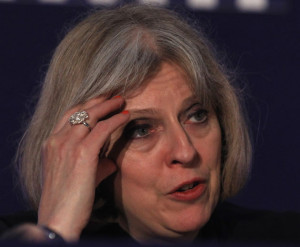The Office for National Statistics (ONS) has released figures which show that the latest net migration figure has risen by 23,000. In the year to December 2012, the UK net immigration figure stood at 176,000. In the year to September 2012, net immigration was 153,000. This will be an embarrassment for the government which has pledged to reduce the net immigration figure to below 100,000 by 2015.
Net migration is calculated by finding the number of people who immigrated to a country and the number of people who emigrated from it within any period and calculating the difference. The UK has, for many years, experienced net immigration with fewer people leaving than arriving.
During the last years of the previous Labour government, the annual net immigration figure stood at about 260,000. This led to considerable adverse comment in the UK’s lively press.
During his 2010 election campaign, the Conservative leader David Cameron promised to reduce net immigration to ‘tens of thousands’ a year. Since then, the government has restated its commitment to reducing net immigration to below 100,000 by 2015, the date of the next general election.
During his tenure, David Cameron’s government has:
Scrapped two Tier 1 visas for ‘high value migrants’;
the Tier 1 (Post Study Work) visa which allowed international graduates from UK universities to stay and work in the UK for two years after graduation
The Tier 1 (General) visa which allowed foreign graduates to work in the UK
Imposed a cap of 20,700 on the number of Tier 2 (General) visas (for ‘highly skilled migrants’ that can be issued each year
Instituted more checks on universities and on international students to prevent abuse of the Tier 4 student visa
Removed the licences from more than 500 further education colleges to sponsor international students to come to study in the UK
The net immigration figure has been falling slowly. Figures released in June showed that net immigration was estimated at 153,000 in the year to September 2013. The latest figures show a rise of 23,000 on this figure.
‘New Commonwealth’ immigration down
A breakdown of the figure shows
97,000 people came to the UK from ‘the New Commonwealth’ (The British Commonwealth is an association of 54 countries which were part of the British Empire. It is informally divided into the ‘Old Commonwealth’ which comprises the former ‘Dominions’; countries such as Australia and Canada which were heavily colonised and ruled by the UK, and ‘The New Commonwealth’ which comprises other countries also ruled by the UK such as India, Pakistan, Nigeria and Sri Lanka). This was down from 151,000 the previous year.
58,000 arrived from the eight eastern European countries which joined the EU in 2004. These countries include Poland and the Baltic States. This was down from 77,000 the previous year.
The number of students coming to the UK was 180,000. This was down from 232,000 the previous year.
Critics of the government argue that the steps taken to lower net immigration are damaging the UK’s economy and could not be sustained.
Sarah Mulley of the centre left Institute for Public Policy Research said in March 2013 that the main method whereby the government had reduced net immigration was by cutting the number of international students studying in the UK. She said that this was not only extremely damaging to the UK’s economy, because international students bring a great deal of income to the UK’s education sector, but that it would also be impossible to continue to reduce the figure.
She said that, because most students stay in the UK for three years and then leave, they add to the emigration figure when they leave. If you cut the number of emigrants, then the net immigration figure will rise, because net emigration will fall.
‘Radical changes’ required
Ms Mulley has said that the UK government needs to make ‘radical changes which go far beyond the student visa regime’ if it wants to hit its target.
On hearing of the latest figures she said ‘Recent declines have been driven in large part by falling numbers of international students, which has come at a high economic cost, but this trend now appears to be levelling off’. She added that it appears to be ‘running out of options’ to meet its target.











